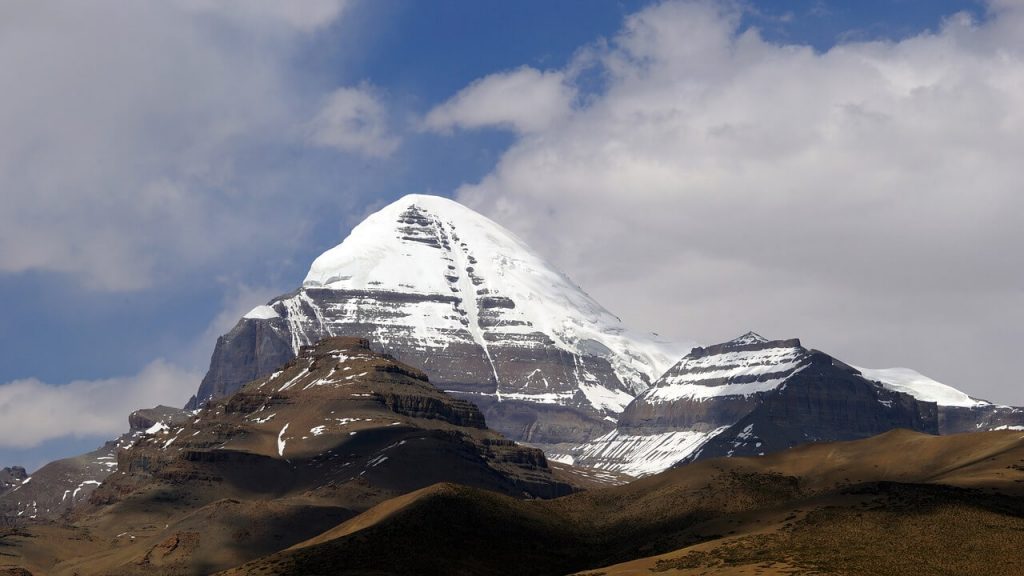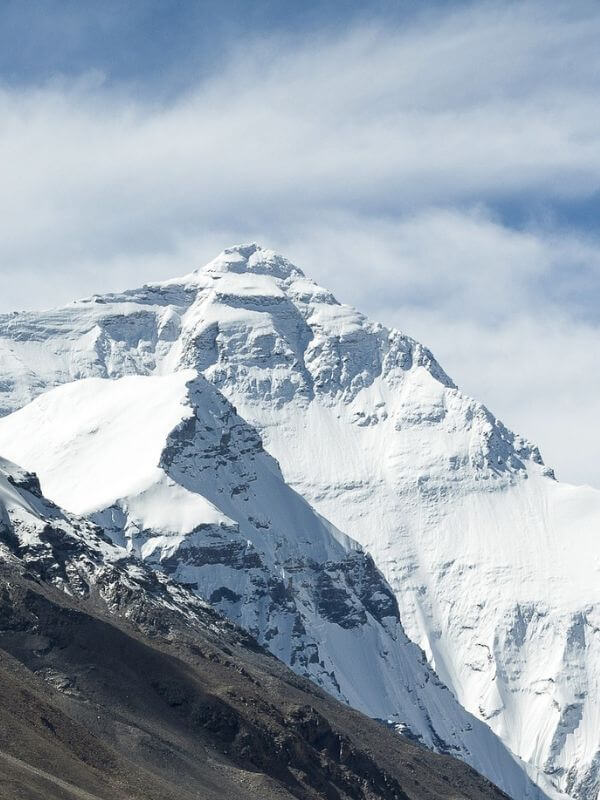
Tibetan culture, tradition, and religion are all the more enticing to foreign tourists. In recent years, Tibet has become a more attractive tourist destination, precisely because of the abundance of monasteries and temples, but also due to the beautiful landscapes complemented by snowy peaks, holy lakes, and beautiful green valleys.
Traveling to Tibet can bring you inner peace and tranquility. I believe that most of us are visiting Tibet for that reason. Tibet has long been attractive to mountaineers and adventurers.
Many of the tourists decide to go to Everest Base Camp, which is one of the most exciting trekking routes. But in recent years, the number of travelers who are choosing their journey to be on Mt. Kailash is growing fast.
Mount Kailash is the most sacred mountain for four religious, and here are the facts about the mountain.
Facts about Mt.Kailash
Before you consider taking a journey to Mt. Kailash, you’ll need to know more about this sacred mountain. If you thought of climbing the mountain, I would immediately interrupt my dream-you will not be able to do it.
Here’s why.
No one ever climbed Mt. Kailash

The mountain is not the highest in the world, and it’s far from it, it has an elevation of 6 638 meters. Still, until now no one has climbed, and probably it will not happen in the future because of the religious uniqueness that it has.
In religious
In Hinduism, it is believed that in Mt. Kailash abodes Lord Shiva, his wife Parvati and their children Lord Ganesh and Lord Kartikeya.
In Buddhism believed that Mount Kailash is home of the Buddha Cakrasamvara, also known as Demchok. Also, the mountain is known as Mount Meru in Buddhist scripts. It is central to its cosmology, and an important pilgrimage site for some Buddhist traditions.
In Jain religion is considered that the mountain is the center of the whole Universe. According to Jain’s records, Mount Ashtapada, which is near Mt. Kailash is the place where Rishabhadeva has reached its enlightenment.
In Bon religious, which is native religion to Tibet, believed that the mountain is known as the earthly representation of the TagzigOlmo Lung Ring, or the “nine-story Swastika mountain.”
Mount Kailash Kora
Kora is a type of pilgrimage and meditative practice in the Tibetan Buddhist or Bon tradition.
Kora is a translated Tibetan word meaning “circumambulation” or “revolution.”
The pilgrims in Tibet are doing Kora around all holy places in Tibet. Usually, during ceremonies, celebrations, or rituals.
An interesting fact is that Kora is always a movement in the direction of the clockwise. Therefore, remember it when you visit any sacred place in Tibet, whether it’s Temple or Lake or trekking to Mt. Kailash, always move in the direction of the clockwise.
Make a challenge and get in the most exciting adventure of your life. For many who go to Mt.Kailas to walk the kora, they say it is the world’s best walk.
The walk around the mountain is 58 km, and it is a three-day trek for the tourists.
The best period for trekking to Mt. Kailash
The Mt. Kailash trekking season starts from May to June and from September until October, but trekkers should always be prepared for variable weather. Snow may be found on the Drolma-la at any time of year, and the temperature will often drop well below freezing at night.
The period from June to September is the monsoon, and it is not such a great time to trek around the mountain.
The winter starts in November, and it lasts until April, and the whole area is covered with snow.
The surrounding of the Mt. Kailash
The entire region of Mt. Kailash has religious significance. The area also includes the two beautiful lakes, namely Manasarovar and Rakshasa.
Lake Manasarovar is the world’s highest fresh-water lakes, with an elevation of 4,583 meters and it covers 412 square kilometers. It has a deep spiritual significance for Tibetan Buddhism.
On your way Mt. Kailash kora, you will have time for relaxation on the shore of Lake Manasarovar, and a stunning view over the Transhimalaya range and Mt. Kailash.
Lake Rakshas Tal is also known as the “Lake of the Demon” or “The Devil’s Lake” and is known as a beautiful but mysterious water surface. It is located very close to the western part of Mount Kailash and Manasarovar Lake.
The Altitude of Mt. Kailash Kora
Mount Kailash isn’t the highest mountain, but you should never underestimate the altitude, and do not run on kora if you are not acclimatized. The starting point of the trek is Darchen with an elevation of 4 600 meters, and the route is going up to 5 600 meters above sea level.
As you climb upwards, the air becomes thinner, so it can cause altitude sickness. For comparison, Lhasa is at 3 650 meters above sea level and Shigatse at 3 800 meters, so you can see that there is a lot of difference in the altitude.
Before start to trek, be sure that you have proper acclimatization in Lhasa, for at least three days.
Mount Kailash Tour during the Saga Dawa Festival
If you want to experience the pilgrimage around Mount Kailash, then consider for your Mount Kailash tour to be during the Saga Dawa Festival.
Saga Dawa Festival is the most significant festival in Tibet. Between the Tibetan Buddhists, the festival is known as “the month of merits.” The festival begins on the 15th day of the 4th month according to the Tibetan calendar, and it is a celebration of the birth, enlightenment, and death of Buddha. Buddha was born on the 7th day of the month, and on the 15th day of the month, he attained enlightenment. His death anniversary also falls on the 15th of the month.
During this period, Tibetans go to the area of Mt.Kailash, two or three weeks before the date of the festival. During this time, the giant flagpole at Tarbouche is ritually taken down, and prayer flags replace it.
This year the Saga Dawa Festival started on 17th June, and the next year the festival will begin on 5th June. So if you want to be part of this fantastic journey, you should consider a trip in advance to prepare all the travel permits for Tibet.
